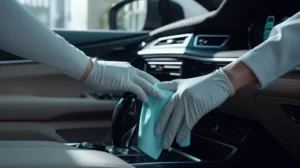Did you know that some of the rice you are eating could be fake? You might have heard about the dangerous levels of arsenic in rice, but now there’s another hazardous ingredient being added to rice in Asian countries – plastic! For over four years, Chinese companies have been producing counterfeit rice made from a combination of potato, sweet potato, and plastic.
The primary motivation behind this production is money. Counterfeit rice producers replicate an expensive type of rice, known as Wuchang rice using cheap ingredients. They add fragrance to their fake rice to mimic the distinctive smell of Wuchang rice. With people in China eating more than half a pound of rice daily, there’s a significant profit to be made in the counterfeit rice business.
The Dangers of Eating Plastic Rice
Eating plastic is terrible for your health. Plastic contains hazardous hormone-disrupting chemicals and carcinogens that can harm your health even if you don’t eat it, let alone if you do. Additionally, consuming a bowl full of plastic can’t be good for your gut.
Although there have been no reports of plastic rice appearing in the United States, it’s essential to stay alert, especially if you’re traveling in Asia.
How to Spot Fake Rice
Here are some ways to identify counterfeit rice:
1. It doesn’t spoil.
Real rice gets spoiled over time, while plastic rice doesn’t.
2. Water comes out when you smash it between your fingers.
If water comes out when you press it between your fingers, it’s likely to be fake rice.
3. It doesn’t stick to your fingers like real rice.
Natural rice will stick to your fingers when pressed, while fake rice won’t.
4. It looks like Styrofoam when it’s cold.
Fake rice resembles Styrofoam, making it visually different from real rice.
5. It smells like sweet potato when burned.
If you’re unsure about your rice’s authenticity, try burning a small amount, and if it smells like sweet potato, it’s fake.
Stay Alert and Choose Wisely
If a batch of counterfeit rice happens to slip past you and you do end up eating a bite or two, you’ll eventually notice a rubbery consistency, and some of the rice will appear melted together like plastic. That’s a signal for you to stop eating as soon as possible.
To safeguard your health and the health of your loved ones, stay alert when buying rice, especially in Asian countries. Be aware of the visual and olfactory differences between authentic rice and the fake rice made of plastic. In the end, your health matters the most, so choose wisely and stay safe.



